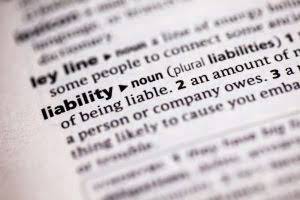Content

To create a sales journal entry, you must debit and credit the appropriate accounts. Your end debit balance should equal your end credit balance. Since the sales journal is used exclusively to record credit sales, the last column (i.e., the amount column) represents both a debit to accounts receivable and a credit to sales.
- The sales journal for the Fortune Store is shown below.
- Sales journal (also known as sales book and sales day book) is a special journal used to record all credit sales.
- Let’s look at an example where the customer paid cash and then changed their mind a few days later.
- Further , on Sales of Furniture in Cash , there is an in increase of Cash, which is an Asset.
- Some accounts are increased by debits and decreased by credits.
- Use the Sales Journal report to view invoices ready to post/posted to the General Ledger.
As inventory gets low, the company would order new LED lights from the suppliers. Get up and running with free payroll setup, and enjoy free expert support. Try our payroll software in a free, no-obligation 30-day trial.
Credit Sales Journal Entry
Each entry increases (debits) purchases and increases (credits) accounts payable. The journal entry for sales made on credit is usually recorded once the customer has purchased the good or service irrespective of when they pay for the goods or services. This is done based on the accrual accounting method where revenue is recorded once it is earned and not when it is paid. Hence companies need to keep tabs on their accounts receivable, ensuring that the details recorded are correct. A sales journal entry records a cash or credit sale to a customer. It does more than record the total money a business receives from the transaction.
How do you enter sales entry?
- In Company Info while Creating Company- Make Accounts With Inventory instead of Accounts Only.
- In Sale Ledger-Make Inventory Values are affected as Yes.
- Select Item or Create by using Alt C.
- Put item Name.
Sales invoices are the primary inputs into the sales journal. In this example, we will assume that all sales are made on terms of 2/10, n/30 and that the gross method is used to record sales discounts. In this way, each account receivable is shown at its full amount.
Written by True Tamplin, BSc, CEPF®
The DR (debit) Other column would be handled a little differently as you need to look to the account column to find out where these individual amounts should be posted. In this case, we would post a $200 debit to merchandise inventory and a $300 debit to utility expense. Under the periodic inventory method, the July 6 shipping costs would go to a Transportation In account and the July 25 discount would go to Purchases Discounts. If a general journal is used to record credit sales, each transaction must be posted to both the subsidiary and the general ledger accounts. Even for a firm with only several hundred sales a month, using a sales journal can save considerable time.
Your credit sales journal entry should debit your Accounts Receivable account, which is the amount the customer has charged to their credit. And, you will credit your Sales Tax Payable and Revenue accounts. The general journal is the all-purpose journal that all transactions are recorded in.
Credit sales explained
Any entry relating to the sale of merchandise for cash is recorded in the cash receipts journal. The https://www.bookstime.com/ only stores receivables; this means that sales made in cash are not recorded in it. A sale made in cash would instead be recorded in the cash receipts journal. In short, the information stored in this journal is a summary of the invoices issued to customers.
Sales journal entries should also reflect changes to accounts such as Cost of Goods Sold, Inventory, and Sales Tax Payable accounts. How you record the transaction depends on whether your customer pays with cash or uses credit. Read on to learn how to make a cash sales journal entry and credit sales journal entry. Using a sales journal significantly decreases the amount of work needed to record transactions in a manual system. It also is not necessary to write an explanation of the transaction because only credit sales are recorded.Finally, the amount of time needed to post entries is reduced.
What is a sales journal entry?
This is a document sent to customers showing full details of goods returned by them. It is evidence that goods has been returned by credit customers. I can see that the total balance goes to 0, because now I have both accounts to post into.
Further , on Sales of goods on Credit to ABC Co., the company has a receivable from ABC Co. or in other words the asset of the company is increased. Further , receipt of money for Sales of goods in Cash , results in increase of Cash, which is an Asset. When an asset is increased, the asset account is debited according to the Rules of Debit and Credit. So Cash A/c would be debited, as a increase in an Asset account is debited. After the customer pays, you can reverse the original entry by crediting your Accounts Receivable account and debiting your Cash account for the amount of the payment. As a refresher, debits and credits affect accounts in different ways.
What is a sales journal?
Under the periodic inventory method, the credit would be to Purchase Returns and Allowances. The subsidiary (customer) ledgers would be updated daily but at the end of the period, the TOTALS only would be recorded in posted directly into the accounts listed with no journal entry necessary. When companies offer goods or services on credit, they often do so with stipulated conditions for the payment of the amount owed; these conditions are referred to as credit terms.
Numeric (Whole) – Number of distributions
in the transaction; valid numbers are 1 to 147. The number of distributions
for a beginning balance transaction is 1. Alphanumeric – Invoice (internal) note for
the transaction. Alphanumeric – Statement (printed) note for
the transaction.
The total balance is 745, which is in Danish currency, and now, when I enter my balance account, It could be the Sales EU, because this is an EU customer. Let’s say, we have a shop, where we are servicing https://www.bookstime.com/articles/sales-journal and repairing bikes, and we have existing customers coming with their bikes and submit them for repair, and they pay in cash. When you sell a good to a customer, you’re getting rid of inventory.

